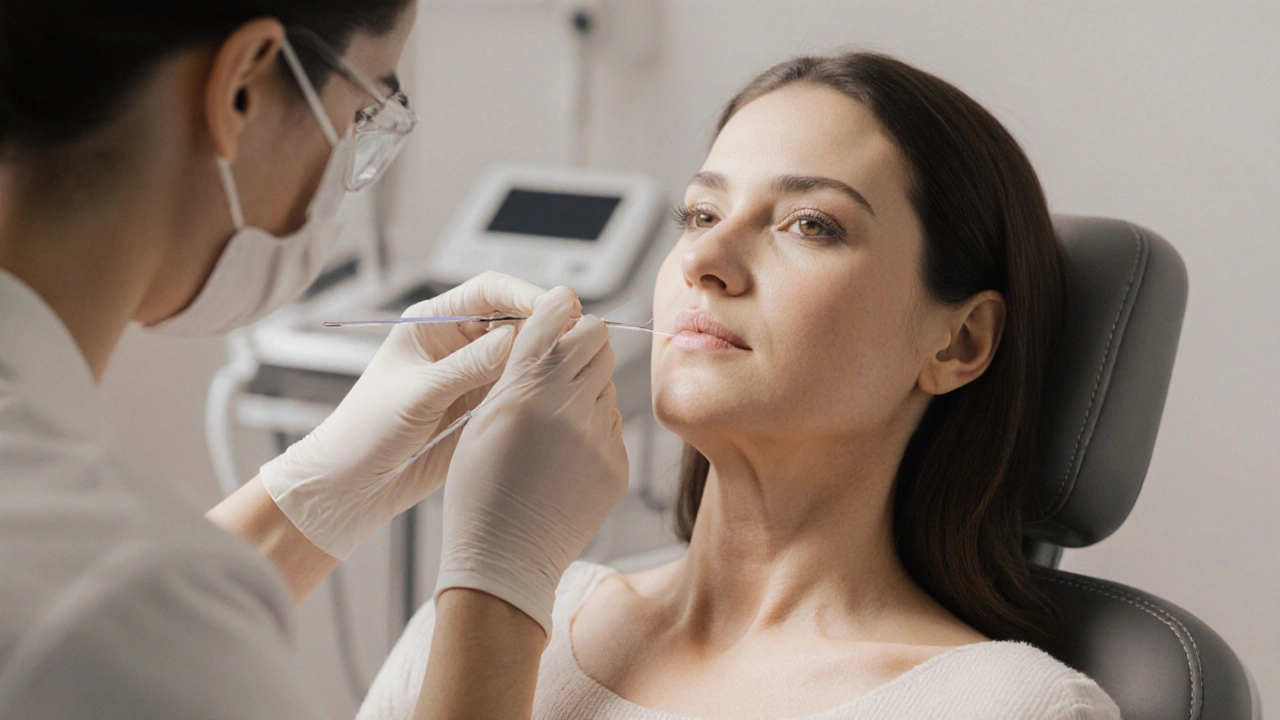Thread Lift: What It Is, How It Works, and What You Need to Know
When you hear thread lift, a minimally invasive cosmetic procedure that uses dissolvable sutures to lift and tighten sagging facial skin. Also known as a non-surgical facelift, it’s become one of the most popular ways to restore a more youthful look without going under the knife. Unlike traditional facelifts, which require incisions and weeks of recovery, a thread lift takes under an hour, uses local anesthesia, and lets most people return to normal activities the next day.
The threads used in this procedure—usually made of PDO (polydioxanone), a biocompatible, absorbable material commonly used in surgical sutures—are inserted under the skin with fine needles. Once in place, they physically lift tissue and trigger collagen production over time. This means you get immediate results, plus gradual improvement as your skin rebuilds its natural support structure. The procedure targets areas like the jawline, cheeks, and eyebrows—places where gravity and aging cause drooping. It’s not a replacement for a full surgical lift, but for people with mild to moderate skin laxity, it’s a powerful middle ground.
What makes thread lifts stand out is how they connect to other non-invasive treatments. Many people combine them with fillers, injectable gels that restore volume in sunken areas like cheeks or under eyes for a fuller, more balanced result. Others use them alongside skin-tightening devices, tools like ultrasound or radiofrequency that heat deeper layers to boost firmness. These combinations are common in clinics offering aesthetic services, especially in the UK, where patients are increasingly seeking low-downtime options.
But it’s not without risks. Some people experience bruising, swelling, or temporary asymmetry. Rarely, threads can migrate or become visible under the skin. That’s why choosing a qualified provider matters more than price. Look for practitioners trained in facial anatomy—someone who understands where to place threads to avoid nerves and blood vessels. It’s not just about pulling skin tighter; it’s about working with the structure beneath.
And while thread lifts are mostly associated with facial rejuvenation, they’re also used for other areas—like the neck, eyebrows, and even the arms or buttocks in some clinics. But the most common and well-researched use remains the face. If you’re considering one, ask about the type of threads used (barbed vs. smooth), how many are needed, and what the expected results look like at 3, 6, and 12 months. Results typically last 12 to 18 months, though collagen stimulation can extend the effect.
What you’ll find in the posts below isn’t just a list of procedures. It’s a real look at what people experience—from the cost and recovery to the surprising side effects and how it compares to other treatments like fillers or surgery. You’ll see how thread lifts fit into the bigger picture of cosmetic care in the UK, what doctors actually recommend, and how to avoid common pitfalls. No fluff. No marketing spin. Just what you need to decide if this is right for you.
What Is the 20-Minute Permanent Facelift? Real Results or Just a Myth?
The 20-minute permanent facelift is a marketing myth. Learn what thread lifts really do, how long results last, the real risks, and safer alternatives in the UK.

